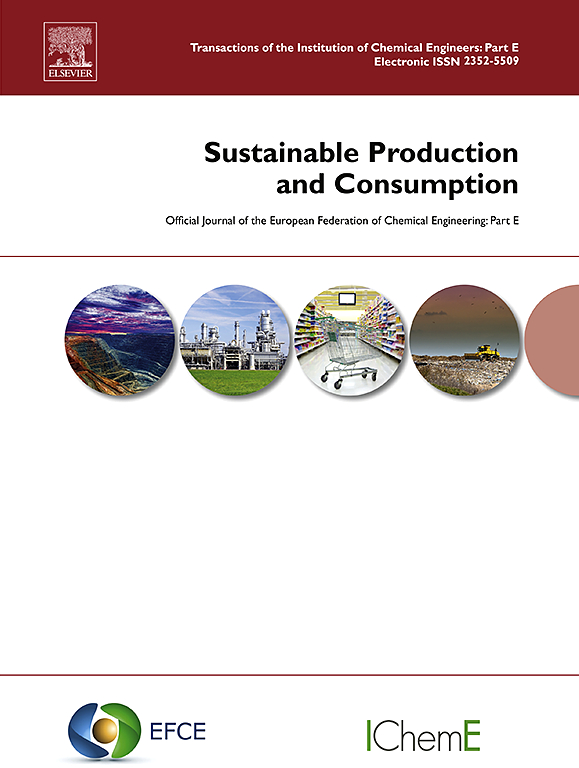全欧洲农业病虫害防治战略的农场级环境可持续性评估
IF 9.6
1区 环境科学与生态学
Q1 ENVIRONMENTAL STUDIES
引用次数: 0
摘要
植物保护产品中使用的化学农药在确保作物产量方面发挥着重要作用,但也对生态系统和人类健康造成影响。为了了解农药在农业系统和战略中的使用对环境的影响,我们采用全生命周期的视角,量化了10个欧洲国家160个农场的虫害控制对环境的影响。我们整合了农药田间应用的排放估算、供应链过程的环境干预以及生态压力的空间变化。结果表明,施用虫害防治剂的类型对农田水平的影响很大。研究发现,铜基杀菌剂在传统、综合虫害管理(IPM)和有机虫害防治方案中,与供应链和现场排放相关,在人类毒性和生态毒性影响方面,会推动化学足迹。几乎所有被考虑的有机农业方案在化学足迹(即人类毒性和生态毒性影响)方面都优于IPM或传统农业,IPM和传统农业的影响概况相似。由于铜基杀菌剂的广泛使用,一些IPM和有机农业情景显示出高毒性影响,推动了这些情景对整体人类健康和生态系统质量的影响。空间分析表明,只有有限数量的农药导致了流域生态毒性压力的潜在超标。我们的研究结果强调了供应链排放的作用,包括农业机械和农药生产中使用的柴油,是生命周期影响的重要因素,包括对气候变化和自然资源的影响。我们确定了病虫害控制策略之间的关键权衡,例如在IPM和有机农业情景下,避免使用合成农药减少化学足迹与增加资源使用和温室气体排放。我们强调设计害虫控制战略的重要性,以尽量减少对环境的影响,同时保持农业生产力。我们的研究为政策制定者和利益相关者提供了可行的见解,为向符合欧洲绿色协议目标的可持续虫害防治实践过渡提供了信息。本文章由计算机程序翻译,如有差异,请以英文原文为准。

Farm-level environmental sustainability assessment of agricultural pest control strategies across Europe
Chemical pesticides used in plant protection products (PPPs) play an important role in securing crop yields but also contribute to ecosystem and human health impact. To understand environmental implications of pesticide usage across farming systems and strategies, we quantify the environmental impacts of pest control for 160 farms across 10 European countries, applying a full life cycle perspective. We integrate emission estimates from pesticide field applications, environmental interventions from supply chain processes, and spatial variation in ecological pressure. Results reveal that farm-level impact performance is highly affected by the type of pest control agents applied. Copper-based fungicides were identified to drive the chemical footprint in terms of human toxicity and ecotoxicity impacts across conventional, integrated pest management (IPM), and organic pest control scenarios, associated with supply chain and field-level emissions. Almost all considered organic farming scenarios performed better than IPM or conventional farming with respect to their chemical footprint (i.e. human toxicity and ecotoxicity impacts), with similar impact profiles for IPM and conventional farming practices. Due to reported extensive use of copper-based fungicides, some IPM and organic farming scenarios showed high toxicity impacts, driving overall human health and ecosystem quality impact for these scenarios. Spatial analysis highlights that only a limited number of pesticides contributes to local potential exceedance of ecotoxicity pressure across catchments. Our findings emphasize the role of supply chain emissions, including diesel fuel used for agricultural machinery and pesticide production, as important contributors to life cycle impacts, including impacts on climate change and natural resources. We identified critical trade-offs between pest control strategies, such as reduced chemical footprints from avoiding synthetic pesticides versus increased resource use and greenhouse gas emissions in IPM and organic farming scenarios. We highlight the importance of designing pest control strategies that minimize environmental impacts while maintaining agricultural productivity. Our study offers actionable insights for policymakers and stakeholders, informing the transition toward sustainable pest control practices aligned with European Green Deal objectives.
求助全文
通过发布文献求助,成功后即可免费获取论文全文。
去求助
来源期刊

Sustainable Production and Consumption
Environmental Science-Environmental Engineering
CiteScore
17.40
自引率
7.40%
发文量
389
审稿时长
13 days
期刊介绍:
Sustainable production and consumption refers to the production and utilization of goods and services in a way that benefits society, is economically viable, and has minimal environmental impact throughout its entire lifespan. Our journal is dedicated to publishing top-notch interdisciplinary research and practical studies in this emerging field. We take a distinctive approach by examining the interplay between technology, consumption patterns, and policy to identify sustainable solutions for both production and consumption systems.
 求助内容:
求助内容: 应助结果提醒方式:
应助结果提醒方式:


